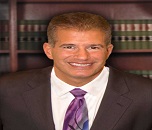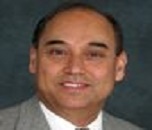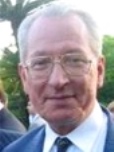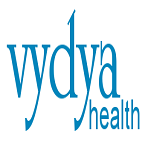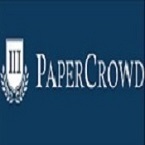Theme: Theme: Fostering Advances and Innovatives in Stroke and Neurological Disorders
Stroke Global-2023
We take immense pleasure in inviting all the participants from all over the world to attend “8th International Conference on Neurological Disorders and Stroke” to be held on March 20-21, 2023 at Vancouver,Canada.
Stroke Global-2023 has been planning and aiming to stimulate new techniques for treatment of neurological disorders and stroke that would be beneficial for the neurosurgery. The conference will be organized around the theme "Fostering Advances and Innovatives in Stroke and Neurological Disorders". Our goal is to bring together worldwide distinguished academics in the field of Neurology and Brain to exchange and share meaningful experiences of various treatment procedures for Neurological disorders and stroke.
Scope and Importance:
Most countries in the world now provide access to medical education. Neurological disorders and stroke conference provides platform to encourage people to take preventive measures and control of their health against the neurological disorders based on a full range of information and access to education in the field of diagnosis and treatment.
Stroke Conferences is intended to honor prestigious award for talented Young researchers, Scientists, Young Investigators, Post-Graduate students, Post-doctoral fellows, Trainees, Junior faculty in recognition of their outstanding contribution towards the conference theme. The Young Scientist Awards make every effort in providing a strong professional development opportunity for early career academicians by meeting experts to exchange and share their experiences on all aspects of Neurology.
Young Research’s Awards at Stroke Global-2023 for the Nomination:
Young Researcher Forum - Outstanding Masters/Ph.D./Post Doctorate thesis work Presentation and only 25 presentations acceptable at the Stroke Global-2023.
YRF Registration benefits:
- Young Scientist Award recongination certificate and memento to the winners.
- Stroke Global-2023 provides best Platform for your research through oral presentations.
- Learn about career improvement with all the latest technologies by networking.
- Provide an opportunity for research interaction and established senior investigators across the globe in the field of Neuroscience.
- It’s a great privilege for young researchers to learn about the research areas for expanding their research knowledge.
Track 1: Neurological Disorders
Neurological disorders are medically defined as disorders that affect the brain as well as the nerves found throughout the human body and the spinal cord. Structural, biochemical or electrical abnormalities in the brain, spinal cord or other nerves can result in a range of symptoms.
Track 2: Depression and Anxiety
Depression is caused when the person is speechless and motionless for some extended period that may have for psychological or physiological behaviour bases. They are the inability to move normally. Change in appetite, trouble falling asleep, and trouble getting out of bed, thoughts of suicide or death are the symptoms of depression. Depression is treatable. Initial treatment provides symptomatic relief. The people who are suffering from this depression should have the support of the people who are around them like friends, Family Members, etc.
Track 3: Dementia and Alzheimer’s disease
Dementia a group of thinking and social symptoms that interferes with daily functioning. Not a specific disease, dementia is a group of conditions characterized by impairment of at least two brain functions, such as memory loss and judgment.
Symptoms include forgetfulness, limited social skills and thinking abilities so impaired that it interferes with daily functioning. Medication and therapies may help manage symptoms. Some causes are reversible.
Alzheimer’s disease is a progressive disease that destroys memory and other important mental functions. Brain cell connections and the cells themselves degenerate and die, eventually destroying memory and other important mental functions. Memory loss and confusion are the main symptoms. No cure exists, but medication and management strategies may temporarily improve symptoms.
Track 4: Epilepsy and Parkinson’s disease
Epilepsy is a class of neurological disorders categorized by recurrent epileptic seizures. Epileptic seizures are episodes that can differ from shortened and nearly undetectable periods to long periods of vigorous shaking. These episodes can develop in physical injuries, including frequently broken bones. In epilepsy, seizures have a tendency to recur and, as a rule, have no immediate proving cause. Isolated seizures that are arouse by a specific cause such as poisoning are not deemed to represent epilepsy.
- Generalized onset seizures
- Focal onset seizures
- Unknown onset seizures
Parkinson’s disease is a disorder of the central nervous system that affects movement, often including tremors. Nerve cell damage in the brain causes dopamine levels to drop, leading to the symptoms of Parkinson’s. Parkinson’s often starts with a tremor in one hand. Other symptoms are slow movement, stiffness and loss of balance. Medication can help control the symptoms of Parkinson's.
Track 5: Stroke
Stroke is a "Cerebrum Attack" and it can happen to anybody whenever. Stroke happened when blood stream to a space of cerebrum is cut off. At the point when this happens synapses are denied of oxygen and start to kick the bucket. At the point when synapses bite the dust during a stroke, capacities constrained by that space of the mind, for example, memory and muscle control are lost.
Types of Stroke
- Ischemic Stroke.
- Transient Ischemic Attack or Mini-Stroke.
- Hemorrhagic Stroke.
Track 6: Pediatric Neurology and Geriatric Neurology
Pediatric neurology or child neurology relates to a specialized branch of medicine that deals with the diagnosis and management of neurological conditions in neonates (newborns), infants, children and adolescents. The department of child neurology encloses diseases and disorders of the spinal cord, brain, peripheral nervous system, autonomic nervous system, muscles and blood vessels that affect individuals in these age groups. Cerebrovascular disease refers to a group of conditions, diseases, and disorders that affect the blood vessels and blood supply to the brain. Neurovascular disease can develop from a spread of causes, including atherosclerosis, where the arteries become narrow; thrombosis, or embolic blood clot, which may be a grume in an artery of the brain or cerebral phlebo thrombosis which may be a blood clot during a vein of the brain.
Geriatric Neurology is the branch of medicine that studies neurologic disorders in elderly. The subspecialty of Geriatric neurology is defined by its expertise in the diagnosis, treatment, and care of neurological conditions that affect elderly and by its unique body of knowledge regarding the aging nervous system, its vulnerability to specific neurological disorders, and its influence on the prevalence and expression of neurological disease.
Track 7: Psychology and Psychosomatic Disorders
Psychology is the particular study of the mind and behavior, according to the APA. Psychology is a multibranched specialty and comprises numerous sub-fields of study like areas as human evolution, sports, fitness, clinical, social behavior and cognitive processes.
- Cognitive Psychology
- Developmental Psychology
- Educational Psychology
- Forensic Psychology
Psychosomatic Disorders is a condition in which psychological stresses adversely affect physiological (somatic) functioning to the point of distress. It is a condition of dysfunction or structural damage in bodily organs through inappropriate activation of the involuntary nervous system and the glands of internal secretion. Psychosomatic disorders resulting from stress may include hypertension, respiratory ailments, gastrointestinal disturbances, migraine and tension headaches, pelvic pain, impotence, frigidity, dermatitis, and ulcers.
- Drug and the Brain
- Process Addictions
- Medication Assisted Therapy
Track 8: Neurosurgery
Neurosurgery or neurological surgery, known in common parlance as brain surgery, is the medical specialty concerned with the surgical treatment of disorders which affect any portion of the nervous system including the brain, spinal cord and peripheral nervous system
There is a range of procedures a neurosurgeon may recommend. However, some of the more common ones include anterior cervical discectomy, epilepsy neurosurgery, Chiari decompression, craniotomy, lumbar puncture, and laminectomy.
What are the Most Common Reasons for Neurosurgery?
- Carotid Artery Disease. Carotid artery disease occurs when fatty deposits (plaques) clog the blood vessels that deliver blood to your brain and head (carotid arteries)
- Chronic Pain
- Head Injury
- Stroke
- Pituitary Tumors
- Brain Tumors
- Hydrocephalus
Track 9: Spine Surgery
A bone transplant is used in spinal fusion surgery to stop the motion at a problematic vertebral section, which should reduce pain caused by the joint. Along with spinal fusion, medical equipment for spine surgery, bone graft measures, and a bone stimulator are sometimes used. The majority of lower back discomfort can be addressed without surgery. In reality, studies show that 20 to 40% of back procedures fail. This lack of success is so widespread that it has its own medical term: failure syndrome. Back surgery failure syndrome
Track 10: case reports of Neurology and Neurosurgery
There are about more than 600 neurological diseases in the world. There are nearly 248 case reports in intracerebral malignant lymphoma, two cases of intracranial subdural hematoma and 167 cases of Extradural Hematoma.
Case reports on Neurology and Neurosurgery track is made to share scientists, researchers, doctor’s practical experience of new and critical neurological conditions and injuries and to influence young researchers. It enables other researchers to gather knowledge and ideas about new technologies, clinical trials, drug testing and other new aspects on Neurology and Neurosurgery.
Track 11: Translational neurology
is the field of study which applies basic neuroscience research to translate or develop into clinical applications and novel therapies for nervous system disorders. The field encompasses areas such as deep brain stimulation, brain machine interfaces, Neuro rehabilitation and the development of devices for the sensory nervous system such as the use of auditory implants, retinal implants, and electronic skins.
- Electrophysiology
- Neuroimaging
- Gene therapy
- Stem cells
Track 12: Neurobiology and Behavior
The Intellectual Basis: Neurobiology is concerned with, unveiling the biological mechanisms by which nervous systems mediate behavior. The MBB Track in Neuroscience (formerly Neurobiology) is planned to provide students with the tools to study nervous systems biologically from molecules to behavior. Neuroscientists focus on the brain and its effect on behavior and cognitive functions, or how people think. They also examine what happens to the nervous system when people have neurological, psychiatric, and neurodevelopmental disorders.
- Neurophysiology
- Neuroanatomy
- Neuropharmacology
- Behavioral neuroscience
- Developmental neuroscience
- Cognitive neuroscience
- Systems neuroscience
- Molecular neuroscience
Track 13: Cognitive Neuroscience
Cognitive neuroscience is a branch of neuroscience that studies the biological processes that cause human cognition, chiefly in respects to the relation between brain structures, activity and cognitive functions. The cause of it is to regulate how the brain functions and achieves performance.
- Attention
- Change blindness
- Consciousness
- Decision-making
- Learning
- Memory
- Language
- Mirror neurons
- Perception
- Social cognition
Track 14: Brain Injury and Behavioral Neuroscience
It is the destruction or declension of brain cells. Brain injuries occur due to a large range of internal and external factors. In common, brain injury refers to consequential, undiscriminating trauma-induced destruction, while neurotoxicity typically mentions selective, chemically produced neuron injury.
- Traumatic brain injury (TBI)
- Acquired brain injury
Behavioral Neuroscience
Behavioral neuroscience, also called as biological psychology, biopsychology, or psychobiology, is the implementation of the principles of biology to the study of physiological, genetic, and developmental mechanisms of behavior in humans and other animals.
- Sensation and perception.
- Motivated behavior (hunger, thirst, sex)
- Control of movement.
- Learning and memory.
- Sleep and biological rhythms.
- Emotion.
Track 15: Cellular-Neuroscience
Cellular neuroscience is a subfield of neuroscience that studies neurons at the cellular level. Cellular neuroscience investigates the numerous types of neurons, their activities, how neurons interact with one another, and how neurons work together. This paper looks at how far we've come in understanding central nervous system development and function using morphological, genetic, molecular, and advanced physiological techniques. Neuron physiology and molecular biology are investigated. We'll focus on cellular, genetic, and molecular mechanisms in particular. Although the majority, if not all, of the mechanisms that give rise to the nervous system are conserved across all animals, they were frequently found using model organisms.
Track 16:Artificial Intelligence and neurosciences
AI can help improve the diagnosis and detection of brain tumors and other neurological cancers with high accuracy and consistency. Studies show that optical imaging and deep convolutional neural networks (CNNs) can be used to accurately predict brain tumors in less than 150 seconds.
Track 17: Neuro immunology
Neuro immunology is a field that combines neuroscience, the study of the nervous system, and immunology, the study of the immune system. Neuro immunologists find better understanding in the interactions of these two complex systems during development, homeostasis, and response to injuries.Disorders are: Asperger syndrome, traumatic brain injury, communication, speech and language disorders, and genetic disorders such as fragile-X syndrome, Down syndrome, epilepsy, and fetal alcohol syndrome.
Track 18: Neurological Nursing & Clinical Training
Neurological Nursing comprises doctors specialized in diagnosing patients and their problems and neurology nurses are one who trained to aid these doctors in the treatment of patients with neurological subjects. Neurology nurse contracts with giving both post-operative care and immediate care. Clinical training comprises treatment procedures for strokes and many connected disorders and the principal approach of clinical training is to progress neuro protective treatment methods and establishing modest examination procedures such as motion analysis, MRI (magnetic resonance imaging) and OCT (optical coherence tomography).
- Therapeutic targets & mechanism for treatment
- Alzheimer’s disease symptoms
- Rehabilitation Facilities
- Skills & Techniques in Clinical training
- Clinical Evaluation
- Practices in Clinical training
- Promoting Clinical Outcomes
Track 19: Neuroimaging
It's also known as brain imaging, and it's a term that refers to a variety of approaches for imaging the anatomy and function of the neurological system, either directly or indirectly. It's a relatively young field of study in the field of neurobiology. Neuro radiologists are physicians who specialize in neuroimaging. There are two types of neuroimaging: structural imaging and intentional imaging.Cerebrovascular disease refers to a group of conditions, diseases, and disorders that affect the blood vessels and blood supply to the brain. Neurovascular disease can develop from a spread of causes, including atherosclerosis, where the arteries become narrow; thrombosis, or embolic blood clot, which may be a grume in an artery of the brain or cerebral phlebo thrombosis which may be a blood clot during a vein of the brain.
- Imaging of the Anatomy
- Fusion Imaging is a term used to describe a type of imaging that
- Neuroimaging, both functional and structural
- Kurtosis imaging and a diffusion male person
- Computational axial imaging using single-photon emission
Track 20: Neurovascular Disorder
The common mode of expression of stroke could be a relatively sudden occurrence of a focal neurological deficit. Strokes are broadly categorized as ischemic or hemorrhagic. Ischemic stroke is due to the occlusion of a cerebral blood vessel and causes cerebral infarction. Knowledge of the stroke syndromes, the signs, and symptoms that correspond to the region of the brain that's supplied by each vessel, allows a degree of precision in determining the particular vessel that's occluded, and from the temporal evolution of the syndrome, the underlying explanation for vascular occlusion is often deduced. Cerebrovascular disease refers to a group of conditions, diseases, and disorders that affect the blood vessels and blood supply to the brain. Neurovascular disease can develop from a spread of causes, including atherosclerosis, where the arteries become narrow; thrombosis, or embolic blood clot, which may be a grume in an artery of the brain or cerebral phlebo thrombosis which may be a blood clot during a vein of the brain.
- Vascular Malformations
- Carotid Artery Disease
- Venous Sinus Thrombosis
- Intracranial Vascular Disease
- Carotid-cavernous Fistula
Track 21:Neuromascular Diseases
Neuromuscular disorders affect the nerves that control your voluntary muscles. Neurons send messages that control these muscles. When the neurons die or become unhealthy, communication between the nervous system and muscles breaks down. At this stage, the muscles weaken and waste away. The weakness of muscle leads to twitching, cramps, aches and pains, and joint and movement problems. Amyotrophic lateral sclerosis, Multiple sclerosis, Myasthenia gravis, Spinal muscular atrophy are examples of neuromuscular disorders.
Stroke Global-2023 Market is expected to reach $15.32 Billion by 2029 from $10.81 Billion in 2021 at a CAGR of 4.6 %. Stroke Global-2023 is a field of medicine that deals with the medical treatment of Neurological Disorders and Stroke. Region/country wise Stroke market report is available at Stroke Global-2023.
The Stroke Global-2023 market is expected to increase at a compound annual growth rate (CAGR) of 3.5 percent from $33.3 billion in 2019 to $39.4 billion in 2024. A recent WHO survey suggested that various neurological disorders collectively accounts for more than 12% of global deaths on average, and it is predicted that the number of death occurred due to neurological diseases will rise from 95 million in 2015 to approximately 103 million in 2030.The Neurology devices market is valued at XX million US$ in 2018 is expected to reach 19,914.7 million US$ by the end of 2025, growing at a CAGR of 8.3% during 2019-2025.
Anticholinergic, antiepileptic, antipsychotic, hypnotic & sedative, analgesics, antihypertensive, anticoagulants, and others are the drug types that make up the global neurological diseases treatment market. According to a study, an estimated 5.4 million Americans suffer from Alzheimer's disease, and someone in the United States acquires the condition every 68 seconds.Due to key driving factors such as increasing prevalence of neurological disorders, developing healthcare infrastructure, rising awareness associated with neurological diseases, which is fueling the rate of diagnosis, and mounting accessibility of modern treatments in developing countries such as China, India, and Indonesia, Asia Pacific was identified as the fastest growing region between 2021 and 2029. According to the report, the global market for neurological disease pharmaceuticals was worth US$ 70 billion in 2018 and is expected to grow at a CAGR of 5% from 2019 to 2027.
Neurological devices help to diagnose, prevent, and treat a variety of neurological disorders and conditions such as Alzheimer’s disease, Parkinson’s disease, major depression, epilepsy, spinal cord injury, and traumatic brain injury. Neurological devices help to restore hearing and sight and provide the increased function for those with limb loss or congenital limb differences. Some of the neurological devices include neurodiagnostics, neurointerventional, and neurostimulation devices.
Neuroscience industry demand was worth USD 24.09 Billion in 2013 and is anticipated to reach above USD 30.80 billion by 2020. Rising investment in R&D resulting in the development of numerous products in the neuroinformatics coupled with adequate funding from the government are key factors that drive growth in this market. Neuro-informatics involves designing and developing efficient tools and algorithms that can augment the performance of structural and functional mapping. Stroke Global-2023 market is expected to grow at CAGR of 2.9% over the next seven years.
As per the BCC report, the global market for neurological disease treatment and medication was worth $12.6 billion in 2006 and will reach $14 billion by 2007. At a compound annual growth rate (CAGR) of 11.6%, the global market will be worth almost $24.3 billion by 2012.Drugs for multiple sclerosis, Alzheimer's disease, and Parkinson's disease control approximately 99% of the total market share. Medications for multiple sclerosis are just over 35% greater than the market share of medication for Alzheimer's disease, despite the fact that there are far fewer patients with MS. As AD drugs become more prevalent, the shares of the market could change dramatically.
The Alzheimer's Association funds independent investigators worldwide, they have awarded over $335 million to more than 2,250 projects. The global cost of Alzheimer’s and dementia is estimated to be $605 billion, which is equivalent to 1% of the entire world’s gross domestic product. Aggregate Cost of Care by Payer for Americans Age 65 and Older with Alzheimer‘s Disease and Other Dementias: Medicare $113 Billion, Medicaid $41 Billion, Out of pocket $44 Billion, Other $29 Billion.
Dementia is widely considered the second most common cause of dementia after Alzheimer's disease, accounting for 10 percent of cases. Many experts believe that vascular dementia remains underdiagnosed like Alzheimer's disease even though it's recognized as common. The global market for treatments for syndromes of dementia and movement disorders was valued at 10.5 billion in 2019 and should reach $11.1 billion in 2020. Total market value is expected to reach $16.7 billion in 2017 after increasing at a five-year compound annual growth rate (CAGR) of 8.5%.
Report Scope
- An analysis of the trends in drug discovery and development for the neurodegenerative disorders
- An overview of the global neurological disorders treatment market which provides definitions and a structure for the industry
- Provides details for the treatment markets of specific diseases such as Alzheimer's, amyotrophic lateral sclerosis, multiple sclerosis, Parkinson's disease, muscular dystrophy, and other, rarer neurological disorders
- Offers a detailed analysis of patents as well as important technological developments
- A review of government regulationsProfiles the most important companies in the industry today.
- Directors
- Head of Department
- Professors
- Industrial
- Neurologist
- Neuroscientist
- Neuro-oncologist
- Neuroradiologist
- Neurosurgeons
- Psychiatrist
- Students from Academic circles in the research of neurology
Member Associated with Neurological disorders and Stroke research in World:
- American Association of Neurological Surgeons
- American Stroke Association
- American Academy of Neurology
- European Neurological Societies
- World Federation of Neurology
- Spanish Society of Neurology
- National Stroke Association
8th International Conference on Neurological Disorders and Stroke is a single forum to bring together worldwide eminent academics in the field of neuroscience and neurology, Brain investigators, public health experts, scientists, academic geniuses, industry researchers, scholars to exchange about state of the art research and skills.
Intention of this conference is inspire new ideas for treatment that will be helpful across the spectrum of Stroke Global 2023.
A Unique Opportunity for Advertisers and Sponsors at this International event: https://stroke.global-summit.com/sponsors.php
Around 500 top universities universally working in the field of Neuroscience
- Dalhousie University
- Leiden University- Neither land
- Temple University USA
- University Oklahoma
- Boston Coll USA
- Florida International University
- University California – Davis
- University Sheffield
- University Manchester
- University of Nottingham
- Cardiff University
- University of Toronto – Canada
- Hospitals Associated with Neuroscience Research
Conference Highlights
- Neurological Disorders
- Depression and Anxiety
- Dementia and Alzheimer’s disease
- Epilepsy and Parkinson’s disease
- Stroke
- Pediatric Neurology and Geriatric Neurology
- Psychology and Psychosomatic Disorders
- Neurosurgery
- case reports of Neurology and Neurosurgery
- Translational neurology
- Cognitive Neuroscience
- Brain Injury and Behavioral Neuroscience
- Cellular-Neuroscience
- Artificial Intelligence and neurosciences
- Neuro immunology
- Neurological Nursing & Clinical Training
- Neuroimaging
- Neurovascular Disorder
- Neurobiology and Behavior
- Spine Surgery
- Neuromuscular Diseases
To share your views and research, please click here to register for the Conference.
To Collaborate Scientific Professionals around the World
| Conference Date | March 20-21, 2023 | ||
| Sponsors & Exhibitors |
|
||
| Speaker Opportunity Closed | Day 1 | Day 2 | |
| Poster Opportunity Closed | Click Here to View | ||
Useful Links
Special Issues
All accepted abstracts will be published in respective Our International Journals.
- Journal of Neurological Disorders
- Journal of Pediatric Neurological Disorders
- Journal of Neurology and Neuroscience
Abstracts will be provided with Digital Object Identifier by











